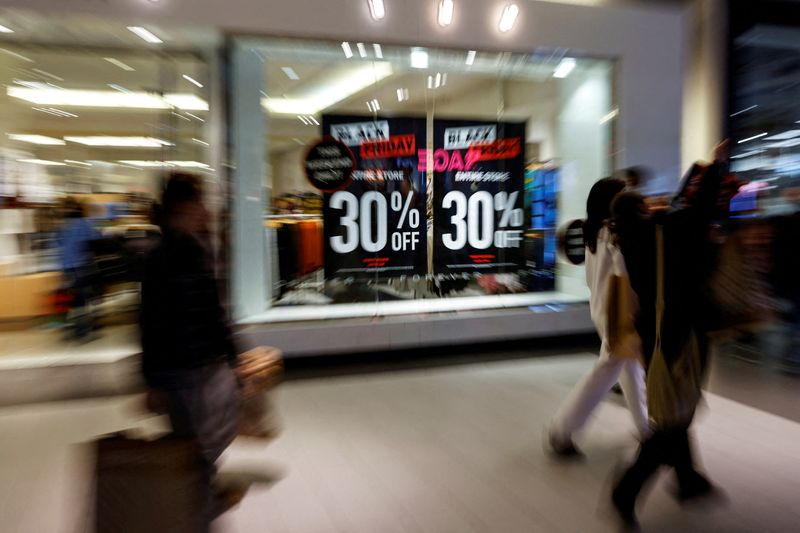(Reuters) -U.S. holiday sales in 2021 came in at a better-than-expected $886.7 billion, boosted by customers returning to stores and splurging more online, even as a jump in COVID-19 cases and supply chain issues threatened to upend the crucial shopping season.
The National Retail Federation (NRF) said holiday sales, including e-commerce, jumped 14.1% during November and December, exceeding its latest forecast of a rise of as much as 11.5%.
"Despite supply chain problems, rising inflation, labor shortages and the Omicron variant, retailers delivered a positive holiday experience to pandemic-fatigued consumers and their families," NRF Chief Executive Officer Matthew Shay said in a statement.
With higher wages, and better household savings from stimulus checks and reduced spending on outdoor activities, U.S shoppers opened up their wallets to everything from apparel and sporting goods to furniture and electronics.
E-commerce and non-store sales jumped 11.3% over the holiday season, NRF data showed.
The make-or-break shopping season was marked by pandemic-induced shipping delays and product shortages. Some retailers such as Walmart (NYSE:WMT) and Target (NYSE:TGT) re-rerouted goods to less congested ports and even chartered their own vessels for deliveries.
Retailers' efforts to stock up early on helped drive 2021 holiday sales "because even though Omicron impacted consumers' mobility in December, they had started shopping well before," RSM US analyst Mike Graziano said.
The Omicron-led surge in coronavirus cases at the end of the year led to a 2.7% decline in retail sales in December, which excludes automobile dealers, gas stations and restaurants, according to NRF data.

Some apparel retailers including Abercrombie & Fitch and Lululemon Athletica (NASDAQ:LULU) have already flagged dull holiday-quarter businesses, hit by Omicron-driven staffing shortages and a decline in store traffic.
Even though inflation and COVID-19 did not dampen holiday sales last year, the NRF said retailers should be prepared for challenges in the coming months due to pandemic-led uncertainty.